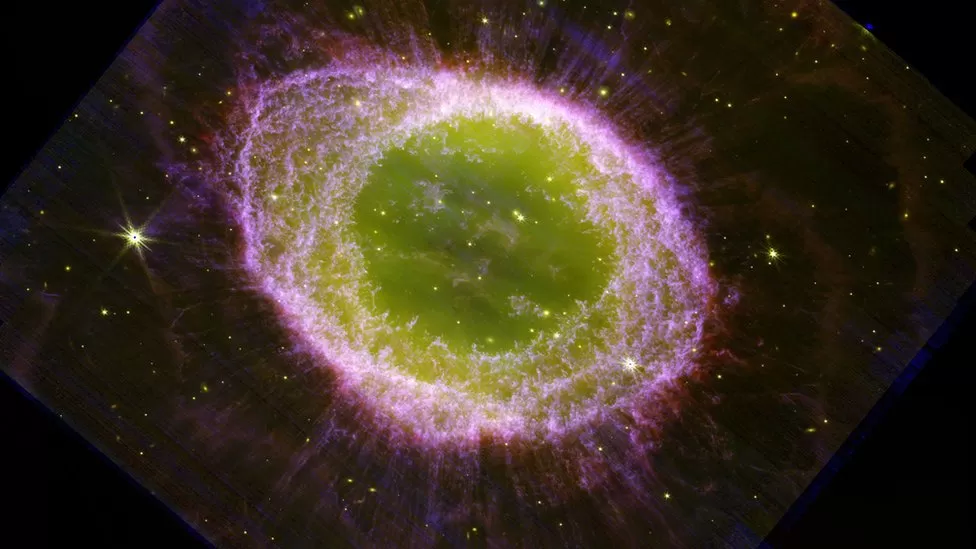James Webb telescope captures end stages of dying star’s life

Mesmerising images of the end stages of a distant star’s life have been captured by the James Webb space telescope (JWST).
They show an unprecedented level of detail of a doughnut-like structure of glowing gas known as the Ring Nebula.
Some 2,600 light-years from Earth, the nebula was born from a dying star that expelled its outer layers into space.
The images could provide key insights into the life cycles of stars, scientists say.
Along with the intricate details of the nebula’s expanding colourful shell, the images also reveal the inner region around the central white dwarf “in exquisite clarity”, Professor Mike Barlow, co-leader of the team of astronomers who released the images, said.
“We are witnessing the final chapters of a star’s life, a preview of the sun’s distant future so to speak, and JWST’s observations have opened a new window into understanding these awe-inspiring cosmic events.
The so-called “planetary nebulae” is a misnomer that dates back to the 18th century, when the astronomer William Herschel mistook their curved shapes for those of planets.
The Ring Nebula is a well-known “planetary nebula”, found in the constellation Lyra, and is visible throughout the summer.
It formed when a dying star blasted much of its substance into space, producing a variety of patterns and glowing rings and wispy clouds that seem to ripple outwards.
“We are amazed by the details in the images, better than we have ever seen before,” Albert Zijlstra, professor in astrophysics at the University of Manchester, said.
“We always knew planetary nebulae were pretty. What we see now is spectacular.”



